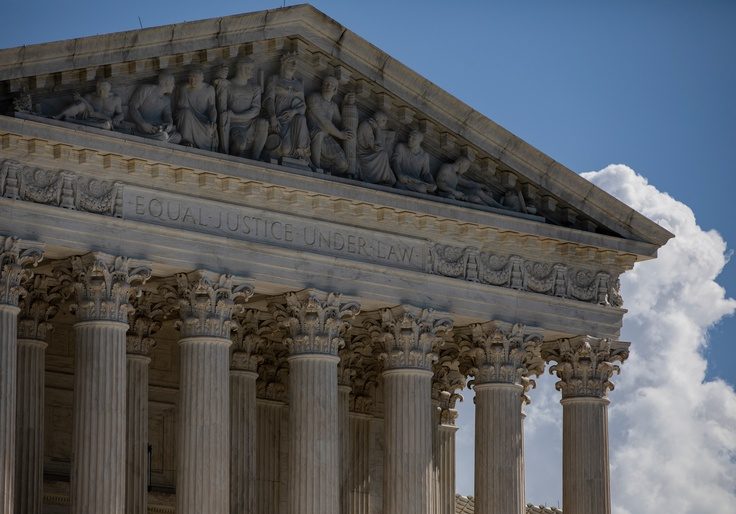Democratic lawmakers in both chambers of Congress introduced legislation to expand the Supreme Court from 9 to 13 justices on Thursday.
Advocates say the measure is needed to rebalance the Court and shift power from conservative justices who pose a threat to voting rights. House Judiciary Committee chairman Rep. Jerry Nadler (D., N.Y.) and Sen. Ed Markey (D., Mass.) are the lead sponsors.
The legislation is likely a reflection of progressive disappointment with President Joe Biden’s commission to study judicial reforms, which was chartered last week. Though Biden appointed leftwing court-packing advocates to the panel, he also included a number of judicial conservatives and Democratic legal elites. It’s uncertain whether the commission will propose sweeping changes.
The bill’s prospects are dim for the time being. House Speaker Nancy Pelosi (D., Calif.) said Thursday that she does not support the bill and will not bring it to the floor. Senate Majority Whip Dick Durbin (D, Ill.), who chairs the Senate Judiciary Committee, also said he’s not ready to sign on to a court-packing bill and wants to see what Biden’s Court commission suggests.
Durbin said, however, that he shares progressive frustrations at the way Republicans handled judicial confirmations. "I want to make sure that my response to that is reasonable, fits into the cause of justice," Durbin told CNN.
In addition to unenthused Democratic leadership, the proposal is a potential target for the Senate filibuster. Advocates would have to shake loose at least 10 Republican votes to bring the bill to a vote.
Congressional Republicans were united in denouncing the bill. The Judicial Crisis Network, a conservative group, launched a national campaign condemning the proposal, backed by a $1 million ad buy.
Apart from "rebalancing," Nadler said the bill is a necessary administrative measure, given the federal judiciary’s growing caseload.
"Nine justices may have made sense in the nineteenth century when there were only nine circuits, and many of our most important federal laws—covering everything from civil rights, to antitrust, the internet, financial regulation, health care, immigration, and white collar crime—simply did not exist, and did not require adjudication by the Supreme Court," Nadler said. "But the logic behind having only nine justices is much weaker today, when there are 13 circuits."
There’s little evidence that the Supreme Court is struggling to stay on top of its work. In the 1980s, the High Court heard about 150 cases per term. The figure has fallen steadily since. This term, the justices are on track to hear just 58 cases, the lowest number since the Civil War. The reasons behind that decline are debated, but the historically light docket doesn’t bear out concerns about judicial strain.
Nor is there a relationship between the number of circuits and the quantity of the Court’s work, as Nadler’s statement suggests. The circuits do not produce Court-caliber cases at an equal rate. This term, matters from the Ninth U.S. Circuit Court of Appeals account for about one-fifth of the Court’s docket. But the justices are reviewing just one case from the Boston-based First U.S. Circuit Court of Appeals. Those circuit-by-circuit differences hold term over term.
Justice Stephen Breyer panned proposals to expand the Court in a Harvard Law School speech earlier this month.
"I hope and expect that the Court will retain its authority," Breyer said. "But that authority, like the rule of law, depends on trust, a trust that the Court is guided by legal principle, not politics. Structural alteration motivated by the perception of political influence can only feed that perception, further eroding that trust."
Progressive judicial activists have recently called on Breyer, 82, to announce his retirement at the end of the Court’s term in June.
